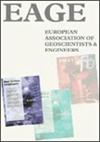Integration of In‐mine Seismic and GPR Surveys to Gain Advanced Knowledge of Bushveld Complex Orebodies
IF 1.6
4区 地球科学
Q3 GEOCHEMISTRY & GEOPHYSICS
引用次数: 0
Abstract
Improving the exploration of deep‐seated mineral deposits and assessing the stability of the mine pillars require that geophysical techniques are deployed in a fast and cost‐effective manner with minimal environmental impact. This research presents results from in‐mine reflection seismic experiments and a Ground Penetrating Radar (GPR) survey conducted at Maseve platinum mine, South Africa. The research aims to develop and implement methods to image Platinum Group Metal (PGM) deposits and geological structures near mine tunnels and assess the stability of pillars. The seismic experiments were conducted using a sledgehammer source (10 lb), conventional cabled geophones (14 Hz), and a landstreamer with 4.5 Hz vertical component geophones. The GPR survey was conducted using a Noggin 500 GPR system with 500 MHz centre frequency. An image of the underlying orebody and geological structures down to 100 m from the mine tunnel floor (∼ 500 m below ground surface) was produced. We correlated the coherent reflections beneath the tunnel floor with a known Upper Group (UG2) PGM orebody. The final seismic section shows that the UG2 mineralisation is dissected by near‐vertical dykes, faults and fractures. These structures, faults in particular, are interpreted to have been active post‐mineralisation, implying that they may have contributed to the current complex geometry of the deposit. Four GPR profiles were collected around a stability pillar adjacent to the seismic lines. The radargram sections were processed to improve the S/N. The results show different patterns of fracturing and stress‐ induced structures. Perhaps, these fracturing were shown to be subvertical and constituted complex micro‐structures within the pillar, which could compromise the pillar stability and integrity. The study demonstrates that in‐mine seismic and GPR surveys can be cost‐effective and valuable for mineral exploration.This article is protected by copyright. All rights reserved整合矿内地震和探地雷达测量以获得Bushveld复杂矿体的先进知识
改进深层矿床的勘探和评估矿柱的稳定性需要以快速、经济高效的方式部署地球物理技术,同时将环境影响降至最低。本研究介绍了在南非Maseve铂矿进行的矿内反射地震实验和探地雷达(GPR)调查的结果。该研究旨在开发和实施对矿山隧道附近的铂族金属(PGM)矿床和地质结构进行成像并评估矿柱稳定性的方法。地震实验使用大锤震源(10磅)、传统电缆检波器(14赫兹)和带有4.5赫兹垂直分量检波器的陆流器进行。探地雷达调查使用中心频率为500 MHz的Noggin 500探地雷达系统进行。生成了距离矿井隧道底板100米(地表以下~500米)的下伏矿体和地质结构的图像。我们将隧道底板下的相干反射与已知的上组(UG2)PGM矿体进行了关联。最后的地震剖面显示,UG2矿化带被近垂直的堤坝、断层和裂缝分割。这些构造,特别是断层,被解释为矿化后的活跃构造,这意味着它们可能促成了矿床当前复杂的几何形状。在地震线附近的稳定柱周围采集了四个GPR剖面。对雷达段进行了处理,以提高S/N。结果显示了不同的压裂和应力诱导结构模式。也许,这些压裂被证明是颠覆性的,并在矿柱内构成复杂的微观结构,这可能会损害矿柱的稳定性和完整性。该研究表明,矿山地震和地质雷达调查具有成本效益,对矿产勘探具有价值。这篇文章受版权保护。保留所有权利
本文章由计算机程序翻译,如有差异,请以英文原文为准。
求助全文
约1分钟内获得全文
求助全文
来源期刊

Near Surface Geophysics
地学-地球化学与地球物理
CiteScore
3.60
自引率
12.50%
发文量
42
审稿时长
6-12 weeks
期刊介绍:
Near Surface Geophysics is an international journal for the publication of research and development in geophysics applied to near surface. It places emphasis on geological, hydrogeological, geotechnical, environmental, engineering, mining, archaeological, agricultural and other applications of geophysics as well as physical soil and rock properties. Geophysical and geoscientific case histories with innovative use of geophysical techniques are welcome, which may include improvements on instrumentation, measurements, data acquisition and processing, modelling, inversion, interpretation, project management and multidisciplinary use. The papers should also be understandable to those who use geophysical data but are not necessarily geophysicists.
 求助内容:
求助内容: 应助结果提醒方式:
应助结果提醒方式:


